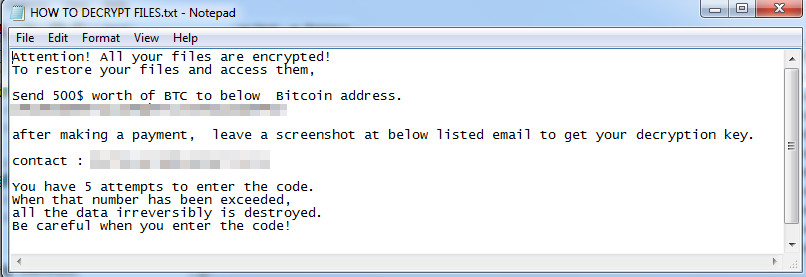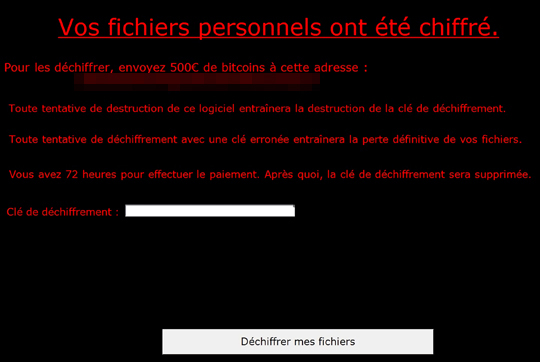RANSOM_VIBOROT.THIAHAH
HEUR:Trojan.Win32.Generic (Kaspersky)
Windows


Threat Type: Ransomware
Destructiveness: No
Encrypted: No
In the wild: Yes
OVERVIEW
This Ransomware arrives on a system as a file dropped by other malware or as a file downloaded unknowingly by users when visiting malicious sites.
It connects to certain websites to send and receive information. However, as of this writing, the said sites are inaccessible.
It encrypts files with specific file extensions. It drops files as ransom note.
TECHNICAL DETAILS
Arrival Details
This Ransomware arrives on a system as a file dropped by other malware or as a file downloaded unknowingly by users when visiting malicious sites.
Other System Modifications
This Ransomware sets the system's desktop wallpaper to the following image:
Information Theft
This Ransomware gathers the following data:
- Machine GUID
- Machine Name
- User Name
Other Details
This Ransomware connects to the following website to send and receive information:
- http://viro.m{BLOCKED}ier.fr
It does the following:
- It is capable of the following:
- Download and execute a file.
- Propagate
- Log Key Strokes
- Make the infected machine act as a Botnet to spam emails.
- It encrypts files found in all fixed, removable and network drives.
However, as of this writing, the said sites are inaccessible.
Ransomware Routine
This Ransomware encrypts files with the following extensions:
- .asp
- .aspx
- .csv
- .doc
- .docx
- .html
- .jpg
- .mdb
- .odt
- .odt
- .php
- .png
- .ppt
- .pptx
- .psd
- .sln
- .sql
- .swp
- .txt
- .xls
- .xlsx
- .xml
It appends the following extension to the file name of the encrypted files:
- .enc
It drops the following file(s) as ransom note:
- {Encrypted Directory}\README.txt

SOLUTION
Step 1
Before doing any scans, Windows XP, Windows Vista, and Windows 7 users must disable System Restore to allow full scanning of their computers.
Step 2
Note that not all files, folders, and registry keys and entries are installed on your computer during this malware's/spyware's/grayware's execution. This may be due to incomplete installation or other operating system conditions. If you do not find the same files/folders/registry information, please proceed to the next step.
Step 3
Search and delete these files
- {Encrypted Directory}\README.txt
Step 4
Scan your computer with your Trend Micro product to delete files detected as RANSOM_VIBOROT.THIAHAH. If the detected files have already been cleaned, deleted, or quarantined by your Trend Micro product, no further step is required. You may opt to simply delete the quarantined files. Please check the following Trend Micro Support pages for more information:
Step 5
Restore encrypted files from backup.
Did this description help? Tell us how we did.



